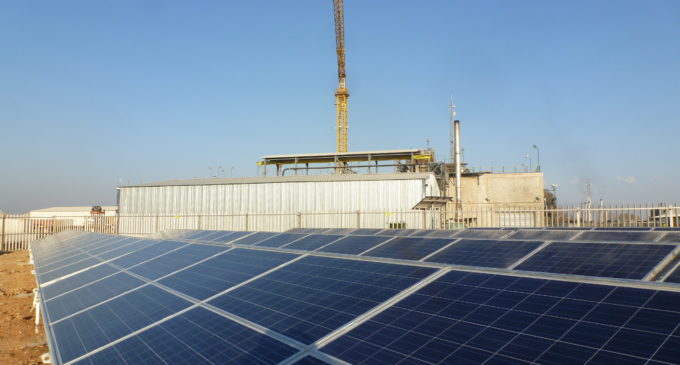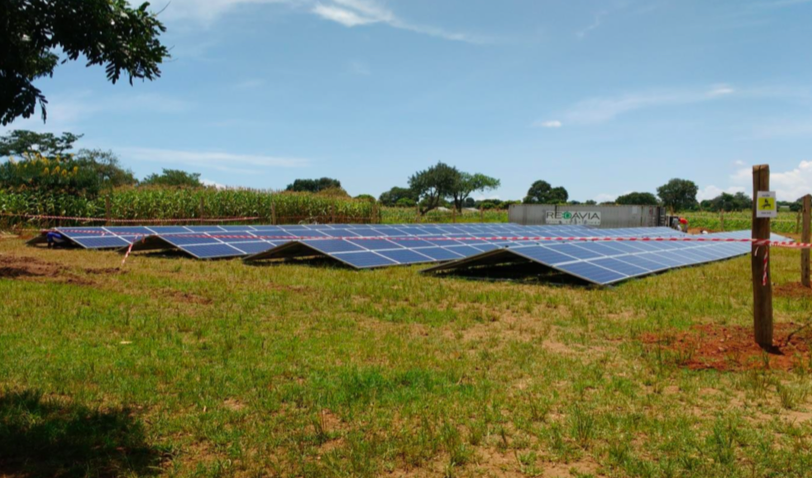Renewable power options are fairly new to the mining sector and the biggest opportunities lie in the off-grid mining sector, Erwin Spolders, CEO of Redavia, tells Energy and Mines. Redavia focuses on redeployable solar farms by offering flexible rental agreements.
“Off-grid mines are the canaries in the coal mine. They are really the first to benefit from solar and wind energy because they are mostly reliant on electricity from generators running on diesel and HFO, which are expensive sources of power compared to grid power,” Spolders says. “Therefore, solar and wind, and other renewables, can offer those mines the biggest savings.”
Off-grid mines are one of the first to adopt new alternative energy sources because they have the greatest incentive to do so, Spolders adds. “I think in the coming years, most of the volume in new mine-site solar systems will come from off-grid diesel and HFO powered mines, particularly in Africa.”
Overall, renewables are just “at the beginning of the scaling stage,” when it comes to entering the mining sector. “The industry as a whole has done several projects with a few leading mining companies, who were willing to be the first. And now we are seeing a lot more interest from mining companies, which are looking at solar and wind as add-ons to their existing fossil fueled power stations,” states Spolders.
Existing challenges
There are several key challenges that exist when it comes to mines trying to employ renewable energy. One of them is understanding and appraising the latest renewable technology.
“A lot of mining power managers are looking at solar and wind for the first time. The way both work is technically quite different from the way diesel generators work. So the first challenge is understanding and appraising what this technology can do, how much it really costs, and whether it is something that is suitable for a [specific] situation,” Spolders reports.
Also, it is important to keep in mind that solar is an intermittent power source, it “isn’t a perfect power source,” as there is no power at night or less power on a cloudy day. So, in our conversations, mining managers have needed to internalize that technological characteristic, and then realize how solar can still be useful as part of a hybrid system, together with diesel generators and/or storage.
Another difficulty is that it is a capital intensive technology, with a high upfront investment and a very long 20+-year amortization period. “Often diesel generator powered mines are used to much shorter amortization periods (five years or so) and lower up-front costs,” says Spolders.
Thus, once the technology is grasped and evaluated, another obstacle becomes long-term purchase agreements, which clash with shorter mine lives. But, this can be fixed by introducing a rental solar farm application, the CEO of Redavia explains.
Additionally, the initial capex of solar farms can be a challenge. “While typically more cost-effective on a per kWh basis, solar farms require higher initial capital expenditure than diesel generators. But once you have a solar farm you don’t need any fuel for the solar energy. So in terms of cash-out, you have much lower cost per kWh — almost free cost for kWh,” highlights Spolders.
One solution to high up-front costs is pre-financing— “having a fully financed, fully outsourced solution, so miners can mine and solar people can run solar farms.”
Another challenge is figuring out what type of technology suits a mine site best — be it solely PV, or PV with smart controls technology (e.g. prediction of cloud movements), or PV with storage.
The decision around which option is better, is largely driven by local diesel prices. “The savings are in the replacement rate: on every kWh of diesel power that you replace with solar power, you make a saving. For places with a higher diesel price, PV and storage offer a lot more savings,” Spolders explains.
The drop in oil prices has put pressure on renewable companies to lower their own costs, but has in no way priced solar out of the market. “We have been able to reduce our cost base for solar farms and thereby reduce our per kWh price levels,” Spolders notes. “We’ve been able to do that by optimizing our supply chain and getting lower cost capital to finance our solar farms. A lot of it is because we are ramping up and starting to create economies of scale.”
Moreover, lower oil prices made solar storage less viable financially. “If you still had crude at $100 or $80 a barrel and delivered diesel prices also correspondingly high, there would be more places where you would put in batteries to replace more diesel kWh, but with lower prices you need to look at really remote places to get a high enough reference (diesel) price to be able to put in storage economically,” Spolders adds.
Projects and funding
In terms of Redavia’s own involvement in the mining sector, the company is successfully continuing its cooperation with Shanta Gold at the New Luika Gold Mine in Tanzania, after the installation of a 63 kWp rental solar power plant that has converted the client’s power source into a hybrid system.
Currently, Redavia is in discussion with Shanta Gold to expand the solar capacity at the New Luika Gold Mine as well as install more solar plants at other sites.
“The project at Shanta has now run for over two years and delivered according to the original projections. So, full success on the small-scale plant. And now we are working towards finalizing the expansion plans of the solar farm at the original site,” Spolders clarifies. “We are also talking to several other mining companies with operations around Sub-Saharan Africa.”
In order to create wealth in countries like Tanzania, all instruments available need to be used, states Spolders, including mining companies as well as other firms operating there. “All the tools need to be employed to get these counties to become wealthier, especially by developing the remote and rural areas.”
When looking into the future, the CEO of Redavia sees renewable energy options progressing further, especially with impressive strides being made in the alternative energy storage field.
“We already have batteries that power communities at night, which use solar power that was stored during the day. We are effectively verifying that those technologies are robust and can be applied in the mining segment. In terms of technology, this is a big step forward because it allows you to reduce the share of diesel electricity to a much greater extent than you would have without storage, and thereby create greater overall cost savings.”
Spolders concludes that renewables offer additional new benefits to mines. “We are working on opening up opportunities for the mining companies to develop better relationships with the communities by providing electrification to the community as an add-on.”
Redavia’s CEO will be participating in the panel discussion on ‘The Role of Renewables in Addressing Mining’s Energy Challenges in Africa’ at the Energy and Mines World Congress in Toronto this November 21-22.



